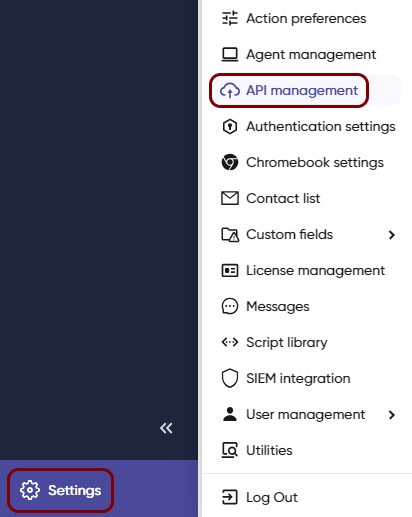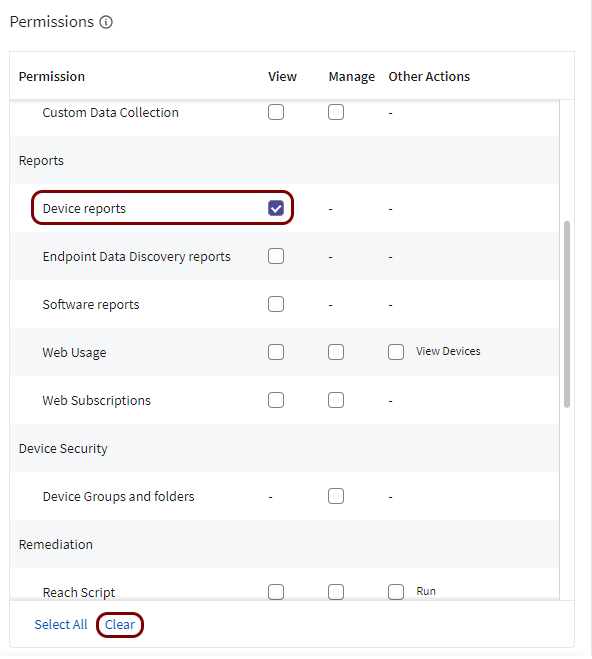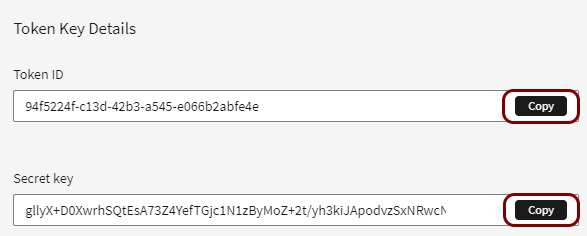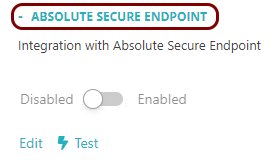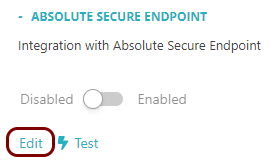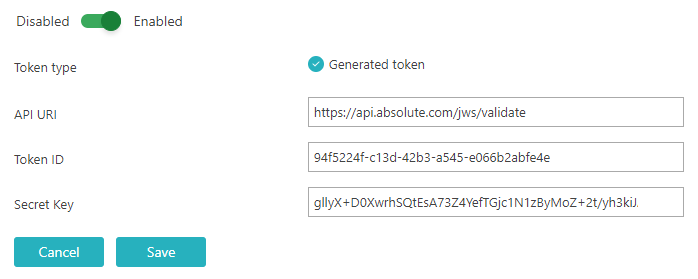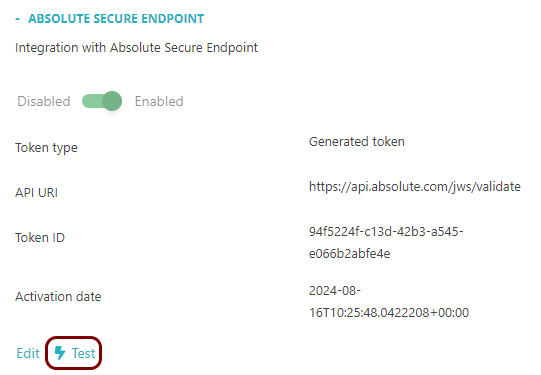Integrate with Absolute Secure Endpoint
In this topic, you will learn how to integrate Portnox™ Cloud with Absolute Secure Endpoint to provide device security information for risk assessment policies.
Generate an API token in Absolute
In this section, you will learn how to generate an API token in Absolute to integrate with Portnox Cloud.
Configure the Absolute integration in Portnox Cloud
In this section, you will configure your Portnox Cloud tenant to use the API token created in Absolute in order to integrate with Absolute Secure Endpoint.
After configuring the integration, adjust your risk assessment policies (look for the risk attribute called Not managed by Absolute Secure Endpoint).

